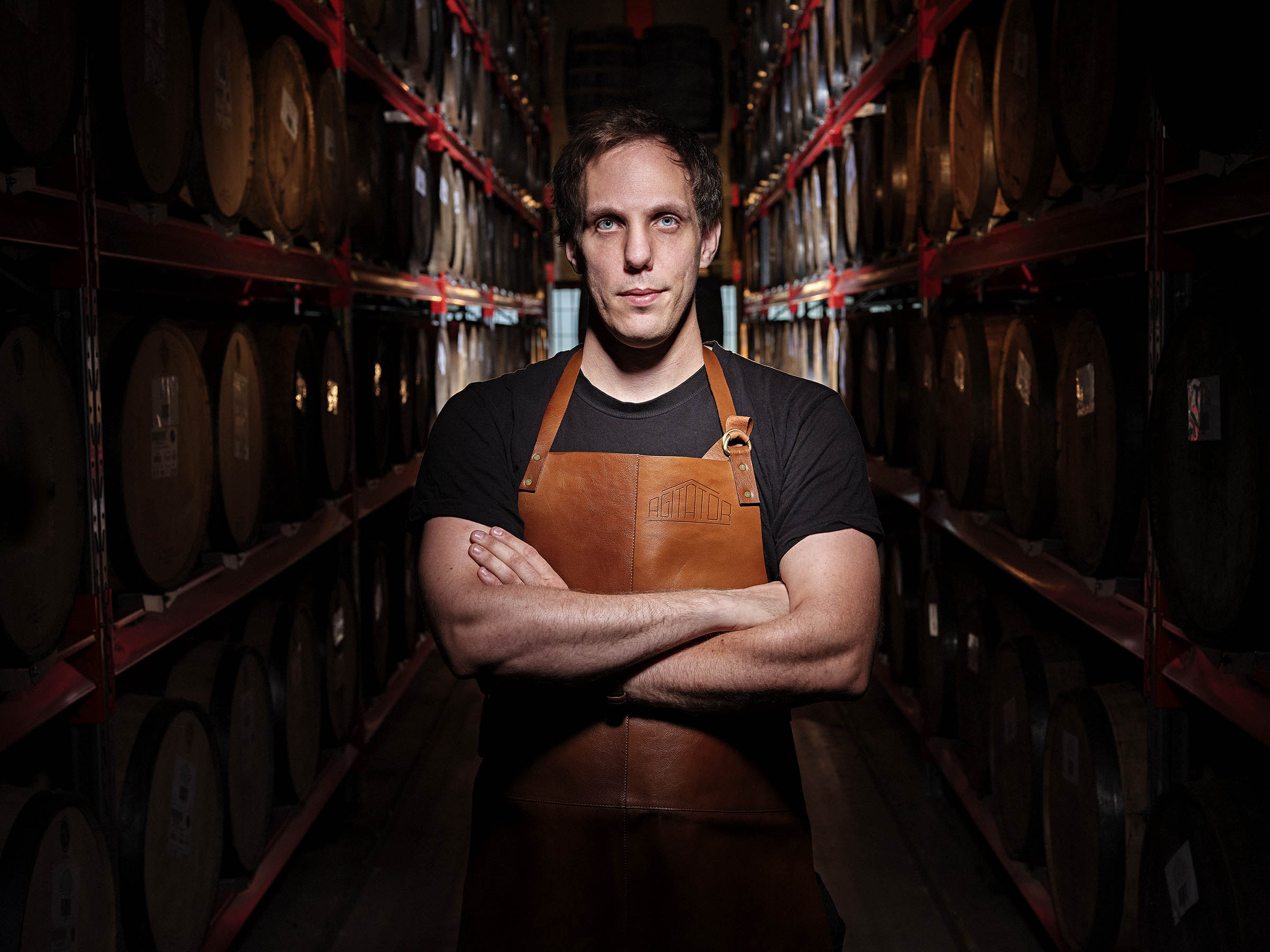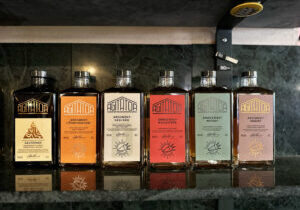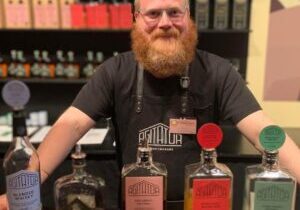
10 QUESTIONS TO THE DISTILLERY MANAGER
Tell us about the idea behind Agitator
Flexibility, efficiency, and the urge to improve have been our keywords from the very beginning. The plan we sketched on a notepad in a café in Ellon, Scotland is not fundamentally different from how our present operation works. The idea of a distillery with two pairs of stills, that can produce two different kinds of whisky from identical ingredients, and the low energy consumption, this has been with us from the start. As the project progressed, it was suggested that we use the district heating network as a source of energy. It had the energy required for distilling, but to make it efficient, a new system was needed: vacuum distilling. By distilling in a vacuum, it is possible to lower the boiling point of a liquid. This means a gentler treatment of the raw material, and a better spirit, but it also lowers the energy consumption in production.
What distinguishes Agitator from other distilleries?
Agitator is a distillery crammed full of spearhead technology, and a strong urge to do it better. In short, you could say that the major differences are our vacuum distillation, our double pairs of stills, our extended fermentation periods, and our experimenting with other kinds of wood in the casks. The last one is, strictly speaking, not part of the distillery.
Why was Agitator’s Distillery built in the town of Arboga?
We looked at premises all over Sweden. Among our 30 potential locations, Arboga was the best suited. The premises had what we needed to build the distillery, and in the building, there was space for large warehouses, with room to grow. Today, the entire operation is under the same roof. Distilling, as well as maturing and bottling. This gives us a flexibility in how we work. Any one person may work in the warehouse as well as in production. The building is not very pretty, but we aimed at building a production plant, not to receive visitors with manicured lawns and duck ponds. Something happens when traditional whisky making meets the technology of the future.
What does a typical day at the distillery look like?
A typical day would begin with us filling the stills with what there is to distill. Shortly
afterwards, we start the mashing for the coming batches. We run several tasks simultaneously,
so a lot happens in the first few hours. After two or three hours, everything goes into auto
mode, which means that the computer runs things for us. We busy ourselves with filling up
casks, emptying casks, and bottling whisky. Towards the end of the day, the stills are getting
ready and we turn them off. The last thing we do is to empty all equipment and clean it for the
following day.
What do you enjoy the most about your job?
I like the challenge of getting the best product imaginable from the raw material. That is, everything from how the malt is produced, as well as the temperature and the pH during fermentation determine the final product. There are so many areas and parameters to keep track of to reach an optimal result. I like the fact that it is so technically complicated to produce a whisky which is then appreciated through the senses. It is very rewarding to understand how the different parameters are connected. And I like that there is always more to learn.
Tell us a bit about yourself
I grew up in Glanshammar, but since completing my university studies, I live in Örebro. I studied Electrical Engineering, with a major in Acoustics. In my free time, I do a lot of cycling, mostly BMX, but recently also road cycling. And I spent a lot of time doing various martial arts, mostly fencing and boxing. Perhaps a little less well known is that I also did silver smithery, drawing and card tricks.
How did you find yourself working with drinks?
It started, as is so often the case, by a kind of coincidence. I started working as a guide at Grythyttan Distillery. Very soon, I was moved to production, and after just three months working as a guide and in production, I got the job as production manager when my predecessor quit. It was a quick move into the industry, with various courses to follow. During my first year, I took courses in distilling, and in the following year I took an advanced certification. I worked for two years at the distillery, until it folded up. Then, I was fortunate enough to be able to move to Scotland for my internship but also to work in the beer industry. Following six months in Scotland, I moved back home and took up a position at a large brewery in Sweden. I worked as a team leader for the brewing process until I could hand in my notice and start at the Agitator project.
When was the first time you drank whisky?
I must have been 20-21 years old and was offered whisky by some fellow students. Didn’t like it very much then, as I preferred cognac. But I remember being captivated by whisky the first time I bought a peaty whisky at Systembolaget. It came as a bit of a shock, that it tasted so exciting! I wanted to know more about whisky, the production, and the taste, and I found out as much as I could. From peated whisky to unpeated, and all of a sudden, I didn’t drink cognac anymore. I was caught by whisky!
How do you relate to whisky today? Are there any favourites that inspire you?
Today, I am obviously very interested in whisky, mainly from a production point of view, but also how it tastes. I like how simple grain can achieve such a great flavour span in the finished product. A whisky that I am very fond of is anCnoc. I did my internship at Knockdhu, the distillery that produces anCnoc, and I have very fond memories from that time. Their twelve-year-old smells just like it does in the distillery, so when I feel a bit nostalgic, it is just the thing.
Looking into the future, where is Agitator in 5-10 years?
I can see Agitator as a leading Swedish distillery, with high-quality products found in the drinks cabinet of every hedonist.









